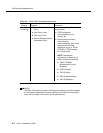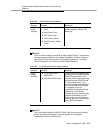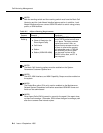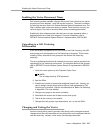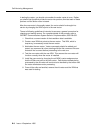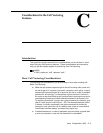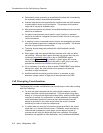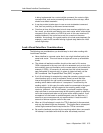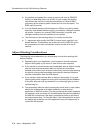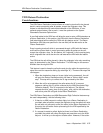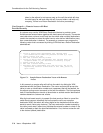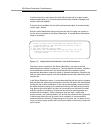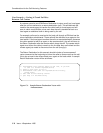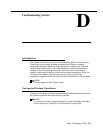
Considerations for the Call Vectoring Features
C-2 Issue 4 September 1995
■ Calls should not be queued to an unstaffed split (unless this is intended by
the customer) without some alternate treatment.
■ Interflow calls should not be permitted to interflow back and forth between
a remote switch vector and a local switch. This process could cause a
single call to use up all available trunks.
■ After an announcement is provided, the audible feedback (such as music)
should be re-attached.
■ For ease-of-use purposes, each specific vector function or operation
should be included in a separate vector and linked via one or more
goto
vector
commands.
■ In creating a vector, commands can be chosen and arranged in a manner
such that answer supervision is delayed as long as possible. This should
be done to keep down the service cost.
■ The caller should always be provided with initial feedback (usually
ringback).
■ Direct agent calls merit special attention because such calls can affect
call queuing. Although direct agent calls take up a queue slot, they are
not always reported as using such a slot on CMS/BCMS reports
(discussed in Appendix F). For example, a direct agent call is never
counted toward the total of queued calls within a split (that is, the
calls-
queued
test condition has no effect on this type of call).
■ If it is necessary for a caller to hear an entire CONVERSANT script before
talking to an agent, the caller should not be queued until after the
converse-on
step is executed.
■ Audible feedback should be provided prior to a
converse-on step
whenever a large number of digits are to be outpulsed to the VRU.
Call Prompting Considerations
The following list includes considerations you should keep in mind when working
with Call Prompting:
■ To enter the digits requested via the
collect digits
command, outside
callers must have a touch-tone telephone. For such callers using rotary
dialing, a 10 second inter-digit timeout takes effect, and the
collect digits
command is omitted. As a precaution, a default treatment (for example,
route-to
attendant command,
queue-to main split
command) should
always be provided in the vector script unless the script is created
exclusively for users of touch-tone telephones.
■ If a caller does not enter the full number of digits specified in the
collect
digits
step, a 10~second timeout occurs. Thereafter, vector processing
continues with subsequent vector steps, and an attempt is made to
process the call using the digits that have been collected. If the digits
entered do not represent a valid destination, and if Automated Attendant



